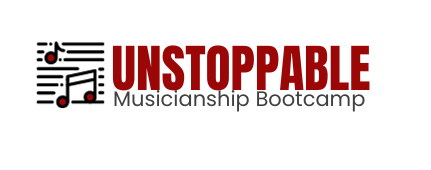Part 2: Solfege Teaching Guide
Structure of Classes
General structure of classes:
Run solfege class once a week. Students may schedule an instrument lesson around solfege so they only have to come to the school once a week.
Assuming four solfege classes in a month, the first three solfege classes are “regular” classes where students solo their solfege number for the week, sing the next number assigned for next week with the class, and finish with ear training. The last class at the end of each month is a music dictation class, where students retrieve their dictation book, lapboard, and pencil to write down music an instructor plays.
45 minutes to 1 hour long depending on number of students.
Two instructors are ideal, one to accompany and teach, and the other to walk the floor and stage to help students conduct time, keep track of where they are in the solfege book, and sing on pitch. During the ear training portion, the second instructor can guide students.
Students may play different instruments other than piano, and some may take solfege only. For those unfamiliar with a piano keyboard, a second instructor can orient them on middle do. Second instructors can orient new students privately while the class continues.
Further details:
Aggregate new students in groups of around 5 so they're not singing alone.
If someone misses a week, makeup both songs next week.
For more significant absences, catch the group below. Students often have other interests - soccer, band, school concerts - and they sometimes rotate in and out.
Disperse new students among more advanced students and have advanced students watch/correct new ones, e.g. beating time.
Once or twice a year, give a solfege concert somewhere (at a school, community center, church, senior center, etc).
Specific structure of solfege classes
Consider 30 minutes for beginner classes for younger students (five or below), 45 minutes to an hour for advanced and adult classes.
Have each student solo the current assignment (marked at the end of the music with a diagonal, see image below on the left). Once completed, cross through diagonal and mark next assignment (image below on the right). Award points based on how well they did.
Discuss any new concepts in next number (e.g. introducing whole note/rest, half note/rest, dotted notes), then have the class sing the next number.
If there is time, review the growing number of concepts.
Finish with two piano ear training.
Specific structure of dictation classes
Students have their own dictation books.
Teacher plays a melody.
Students determine: what is the time signature? (How many beats per measure? Accompanists can firmly accent the first beat guiding students in correctly conducting the first down beat of every measure).
Try to figure out if it’s major or minor and what key it’s in
How many sharps or flats?
Once the class has established the basics, start dictation on a new blank staff and write the clef, key signature, and time signature. The teacher then plays one bar at a time while students figure out the pitches and note durations. The most efficient system is to first write down the note heads, then the correct stems and a bar line.
Once students have completed their work, the instructor reviews (or has advanced students compare their work in pairs and address discrepancies).
Order: Treble clef, key signature (optional), time signature, notes / measures.
Treble clef every line, key signature every line, time signature at the beginning (and if changed later)
Student Growth (long term)
1. Learn to sing, conduct time, sightread.
Learn dictation, develop the ear (ideally, perfect pitch)
Learn to sing without accompaniment (accompanist adapts to beginner / advanced students)
Learn how to lead the discussion for the next assignment by asking questions like: how many beats per measure?
Read bass clef
If piano student, learn to sightread treble and bass clef simultaneously for simple pieces
Add to knowledge of what the right questions are to ask: what is the first note? What kind of note? Major, minor? Key signature?
Advanced students learn to coach less advanced counterparts. Learn how to guide the less advanced by asking the right questions, instead of giving the answers.
Begin learning how to compose music, and how to use solfege to learn to compose.
Accompany solfege class.
Go through this teaching guide, teach solfege classes, and mentor the next generation of teachers.
Teacher Growth (long term)
Starting out: quick meeting at the end of each class to assess / refine
If things go well, transition to meeting monthly, then quarterly
Start with initial teachers, include advanced students-in-training later
Report on new findings (technologies, apps, music-as-a-business, social media, strategic partnerships with other art related organizations and the community, advocates, conservatories - e.g. Juilliard)
Learn to accompany and sing / talk simultaneously.
Learn to adapt accompaniment to students (add in melody? Have them sing acapella?).
Solfege Process Growth
By thinking in terms of “meta” levels, and coaching advanced students on coaching their less advanced counterparts on coaching their less advanced counterparts, the possibilities are endless and the knowledge space expands considerably - from learning about music, to also learning how to learn, learning how to identify and solve problems, learning how to be efficient, and learning how to become a leader and influencer.

